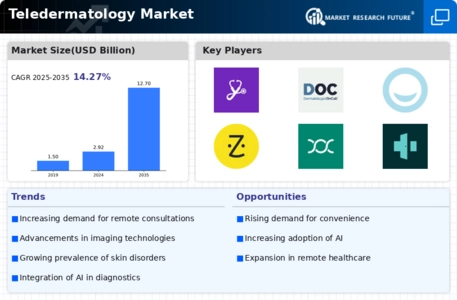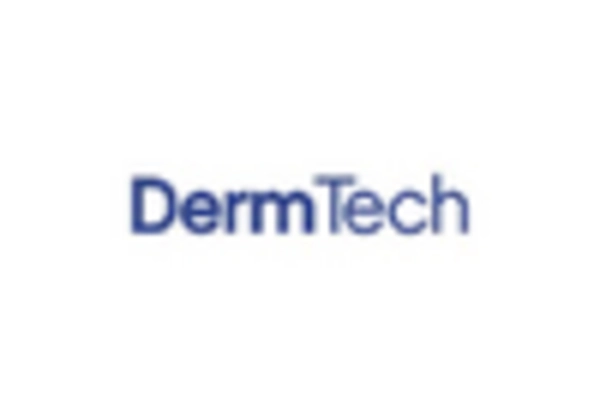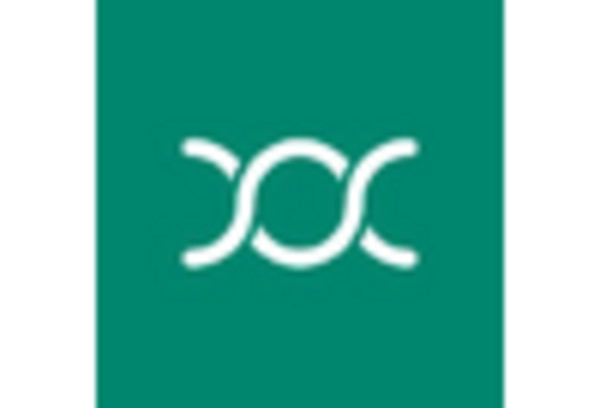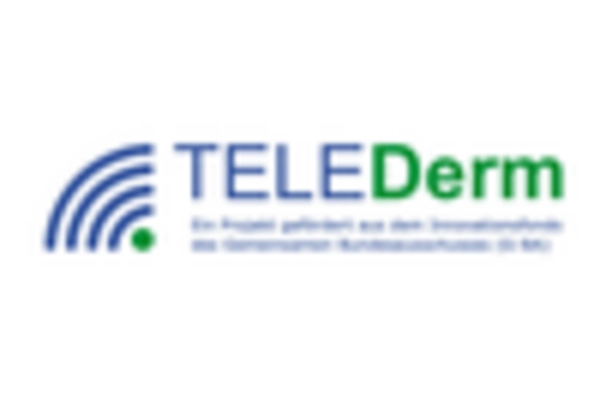Increased Awareness of Skin Health
There is a growing awareness of skin health among the general population, which is significantly influencing the Teledermatology Market. Educational campaigns and increased access to information about skin conditions have led to more individuals seeking dermatological advice. This heightened awareness is reflected in the rising number of online searches for skin-related issues and the subsequent demand for teledermatology services. As patients become more proactive about their skin health, the Teledermatology Market is poised for growth, with more individuals opting for virtual consultations to address their concerns promptly and effectively.
Cost-Effectiveness of Teledermatology
The cost-effectiveness of teledermatology is emerging as a key driver in the Teledermatology Market. Virtual consultations often reduce the overall costs associated with traditional in-person visits, including travel expenses and time off work. Studies suggest that teledermatology can lead to significant savings for both patients and healthcare systems. As insurance providers increasingly recognize the value of telehealth services, reimbursement policies are likely to evolve, further encouraging the adoption of teledermatology. This financial incentive is expected to attract more patients to utilize teledermatology services, thereby contributing to the growth of the market.
Rising Demand for Remote Healthcare Services
The Teledermatology Market is experiencing a notable increase in demand for remote healthcare services. Patients are increasingly seeking convenient and accessible options for dermatological consultations, particularly in regions with limited access to specialists. This trend is supported by data indicating that telehealth consultations have surged, with a significant percentage of patients preferring virtual visits over traditional in-person appointments. The convenience of remote consultations allows for quicker diagnosis and treatment, which is particularly beneficial for conditions requiring timely intervention. As healthcare systems adapt to this demand, the Teledermatology Market is likely to expand, driven by the need for efficient and effective patient care solutions.
Technological Advancements in Telecommunication
Technological advancements in telecommunication are playing a crucial role in the growth of the Teledermatology Market. Enhanced internet connectivity, particularly with the rollout of 5G technology, facilitates high-quality video consultations and the transmission of detailed images necessary for accurate dermatological assessments. This improvement in technology not only enhances the patient experience but also increases the efficiency of healthcare providers. As more practitioners adopt teledermatology solutions, the market is expected to witness substantial growth. The integration of advanced communication tools is likely to streamline workflows, thereby improving patient outcomes and satisfaction within the Teledermatology Market.
Integration of Artificial Intelligence in Diagnostics
The integration of artificial intelligence (AI) in diagnostics is transforming the Teledermatology Market. AI technologies are being utilized to analyze images and assist dermatologists in diagnosing skin conditions with greater accuracy and speed. This innovation not only enhances the quality of care but also increases the efficiency of teledermatology services. As AI continues to evolve, its applications in teledermatology are likely to expand, leading to improved patient outcomes and satisfaction. The potential for AI to streamline diagnostic processes may attract more healthcare providers to adopt teledermatology solutions, thereby driving growth in the market.

















Leave a Comment